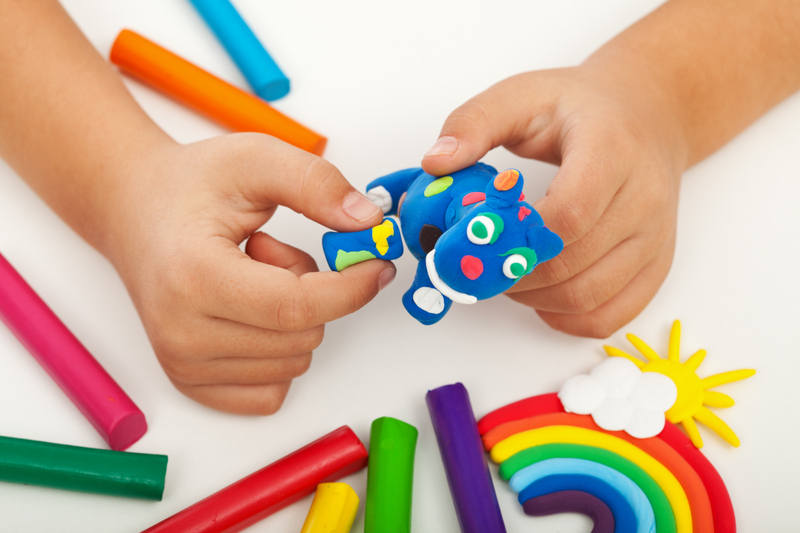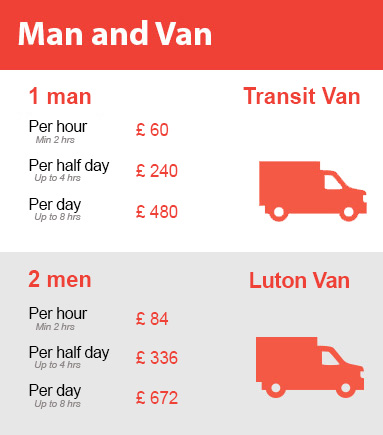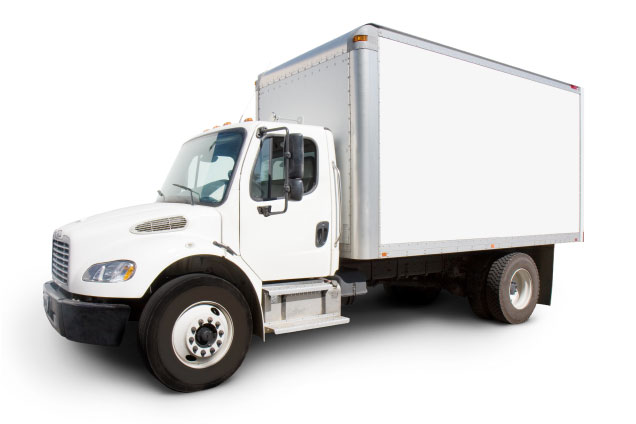Balancing Tunes: The Risks of DIY Piano Moves
Posted on 10/06/2025
Balancing Tunes: The Risks of DIY Piano Moves
The dream of relocating your cherished piano on your own may strike the right chord of adventure. However, before pressing those keys, it's important to recognize the serious risks that come with DIY piano moving. This comprehensive guide explores the hazards, essential considerations, and best practices to ensure you make the safest decisions for both you and your instrument. If you are pondering whether to attempt a piano move yourself or hire professionals, read on to strike the right note with your choice.

Understanding the Weight of the Task: Why Pianos Are Tricky to Move
Pianos are more than beautiful musical instruments; they are also exceptionally heavy, bulky, and delicate. Even the smallest upright piano weighs between 300 to 500 pounds. Grand pianos, on the other hand, can tip the scales at over 1,200 pounds. The combination of awkward weight distribution, fragile inner mechanisms, and irreplaceable sentimental value makes them particularly risky to move without specialized knowledge.
The Anatomy of a Piano: Why Are Pianos So Difficult to Move?
- Bulk and Shape: Pianos have an unbalanced shape, making it hard to grip and maneuver them properly.
- Delicate Parts: The strings, keys, pedals, and internal moving parts are susceptible to damage from jolts or vibrations.
- Finish: High-gloss lacquered wood is easily scratched or marred, affecting both appearance and value.
- Weight Distribution: Most of the weight is concentrated at the base or one end, depending on the piano type.
The Allure and Pitfalls of DIY Piano Moving
Moving a piano on your own appeals for several reasons: cost savings, flexibility, and a sense of accomplishment. However, the risks can outweigh the savings--literally and figuratively. Let's explore the top dangers associated with do-it-yourself piano moves.
Common Risks of DIY Piano Moves
- Personal Injury: Attempting to move a piano without proper equipment or enough manpower can lead to back strains, crushed fingers, sprained ankles, or even more severe accidents.
- Piano Damage: Internal parts, such as strings and hammers, may become misaligned or broken if the piano is dropped or jolted. Cosmetic damage, such as scratches or dents, can also be costly to repair.
- Damage to Property: Doors, floors, walls, and stair railings frequently bear the brunt of an improperly executed move, leading to expensive home repairs.
- Insufficient Equipment: Without the use of piano dollies, padding, and proper straps, moving a piano is almost impossible to do safely.
- Lack of Experience: Even a helpful group of friends are unlikely to have the expertise needed for navigating tight turns, stairs, or uneven terrain with a piano in tow.
Real-Life Tales: When a Piano Move Goes Wrong
Online forums and insurance agencies tell countless stories of amateur piano moves gone awry. From uprights dropped on toes to grand pianos wedged in stairwells, the aftermath is frequently costly, both financially and emotionally. In extreme cases, DIY attempts have resulted in irreversible instrument damage or emergency room visits.
Evaluating the Scope: When Might DIY Piano Moves Be Safe?
While there are significant hazards associated with moving pianos without professional help, certain situations may allow for a safe DIY relocation. Here are some scenarios to evaluate carefully:
- Short, Flat Distances: If the move only requires sliding an upright piano across a single, even surface without steps or obstacles, risks are minimized (but not eliminated).
- Ample Help: A team of fit, informed adults--not just strong but briefed on correct lifting and maneuvering techniques--can help mitigate danger.
- The Right Gear: Having a piano dolly, heavy-duty straps, moving blankets, and protective padding is essential.
- No Structural Hazards: Avoid DIY moves that involve stairs, narrow doorways, or tight corners.
Remember: Even in the most straightforward scenarios, there is minimal room for error. Evaluate your own experience and physical abilities honestly.
Case Study: Unpacking the Hidden Costs of a Failed DIY Piano Move
Consider the case of a family who attempted to move their baby grand piano to a new home a few blocks away. With the help of four friends and a borrowed pickup truck, they tried to lift the piano through the narrow front door. The result was disastrous:
- The piano's legs snapped when going over an uneven threshold.
- The finish was scratched by a metal dolly that wasn't padded properly.
- One helper suffered a pulled back muscle and required physical therapy.
- Repairs cost the family over $2,500--more than double the price of hiring professional piano movers in the first place.
This scenario is unfortunately all too common. It highlights why cutting corners on your instrument's move could create more trouble--financially and emotionally--than it saves.
Proper Preparation: What Does a Professional Piano Move Involve?
Understanding how expert piano movers handle this complex task can help you weigh the true risks and benefits. Here's an overview of their standard process:
- Inspection: Movers assess the type, weight, and dimensions of the piano, as well as all entry and exit points.
- Protective Wrapping: The instrument is securely wrapped in specialized padding and moving blankets.
- Disassembly (if needed): For grand pianos, legs, pedals, and the lid are often removed and packed separately.
- Appropriate Equipment: Dollies, skid boards, ramps, and custom straps are used to ensure safe handling.
- Coordination: Experienced movers use precise communication, often assigned by role, to navigate stairs, inclines, and corners.
Moving a piano is a symphony of planning, muscle, and fine-tuned technique. This orchestrated approach minimizes the risk of damage and injury, ultimately protecting your investment for years to come.
Risk Assessment: Can You Undertake a DIY Piano Move?
If you're still considering rolling up your sleeves to move your piano, conduct this honest risk assessment first:
- Do you have at least 3-5 able-bodied helpers with experience in lifting heavy items?
- Is the entire route free of stairs, narrow doorways, sharp turns, or uneven surfaces?
- Have you secured all necessary equipment (dollies, straps, blankets, gloves)?
- Are you prepared for potential damage to your home or your instrument?
- Is the value of your piano sentimental or financial enough to justify professional movers?
If you answered 'no' to any of these questions, the risks of a DIY piano move may greatly outweigh the convenience.
Alternative Solutions: When to Call the Pros
Sometimes, the wisest move is to leave it to the experts. Here are key signs you should hire professional piano movers:
- Stairs, elevators, or awkward turns are involved in the move.
- The piano is particularly heavy (grand or baby grand models).
- You lack the right tools or enough hands-on help.
- Your piano holds significant value--financial, historical, or sentimental.
- Your homeowner's insurance does not cover DIY damage or personal injury.
Moving companies have specific experience with upright and grand pianos, offering insurance and peace of mind that a do-it-yourself move can never guarantee. Professional movers can also assist with piano reassembly and tuning at your new location, ensuring your instrument is ready to play its next note.
How Much Do Professional Piano Movers Cost?
While prices vary, the average cost for moving an upright piano locally ranges from $200 to $500, while grand pianos may cost $400 to $1,200 depending on distance, stairs, and complexity. These fees commonly include basic insurance, equipment, and transport. When compared to the potential losses--and risk of injury--the investment is comparatively small.
Balancing Tunes: The Last Word on DIY Piano Risks
Deciding whether to attempt a DIY piano move is a balancing act between cost savings and overwhelming risk. For most homeowners, the risks to personal safety, property, and the instrument's integrity tip the scale in favor of professional help. While minor internal moves over flat surfaces may be feasible, transporting a piano between homes--or worse, upstairs or through cramped doorways--is fraught with pitfalls.
- Pianos are heavy, valuable, and fragile--improper handling can cause irreparable harm.
- Personal injuries sustained during DIY piano moves are common and often severe.
- The financial cost of repairs or replacement far exceeds the price of hiring pros.
When it comes to moving your piano, harmony is achieved by prioritizing safety and expertise over DIY ambition.

Frequently Asked Questions on the Risks of DIY Piano Moves
-
Can two people move an upright piano safely?
No, it's strongly discouraged. Even smaller upright pianos generally require at least three to five people, proper equipment, and an abundance of care. -
What's the biggest mistake in DIY piano moving?
Underestimating the weight and fragility of the instrument, skipping protective wrapping, and failing to rehearse the route in advance are all critical missteps. -
Is piano tuning required after a move?
Yes. Even the smoothest move can cause minor shifts and detuning, so expert tuning is recommended anytime a piano is relocated. -
Are DIY piano moves ever covered by insurance?
Most homeowner's policies exclude damages related to do-it-yourself moves. Always check your coverage before proceeding.
Final Thoughts: Striking the Right Chord with Your Move
Balancing the practical and sentimental value of your piano when moving is a unique challenge. While it may be tempting to take on this melody-making mission yourself, the risks of a DIY piano move often resonate louder than the rewards. Protect your back, your investment, and your musical inspiration by weighing the options carefully--and when in doubt, let professionals carry the tune for you.
Your piano's next performance should be on stage, not on the moving truck.
Key Takeaways On The Dangers of DIY Piano Moves
- Pianos are deceptively heavy and fragile, requiring specialized tools and experience for safe moving.
- DIY moves increase the risk of severe personal injury and costly property or instrument damage.
- Professional piano moving is a worthwhile investment that protects your instrument and your peace of mind.
If you value your piano's sound, appearance, and continued playability, entrust its next move to those with the expertise and equipment to do the job right.





